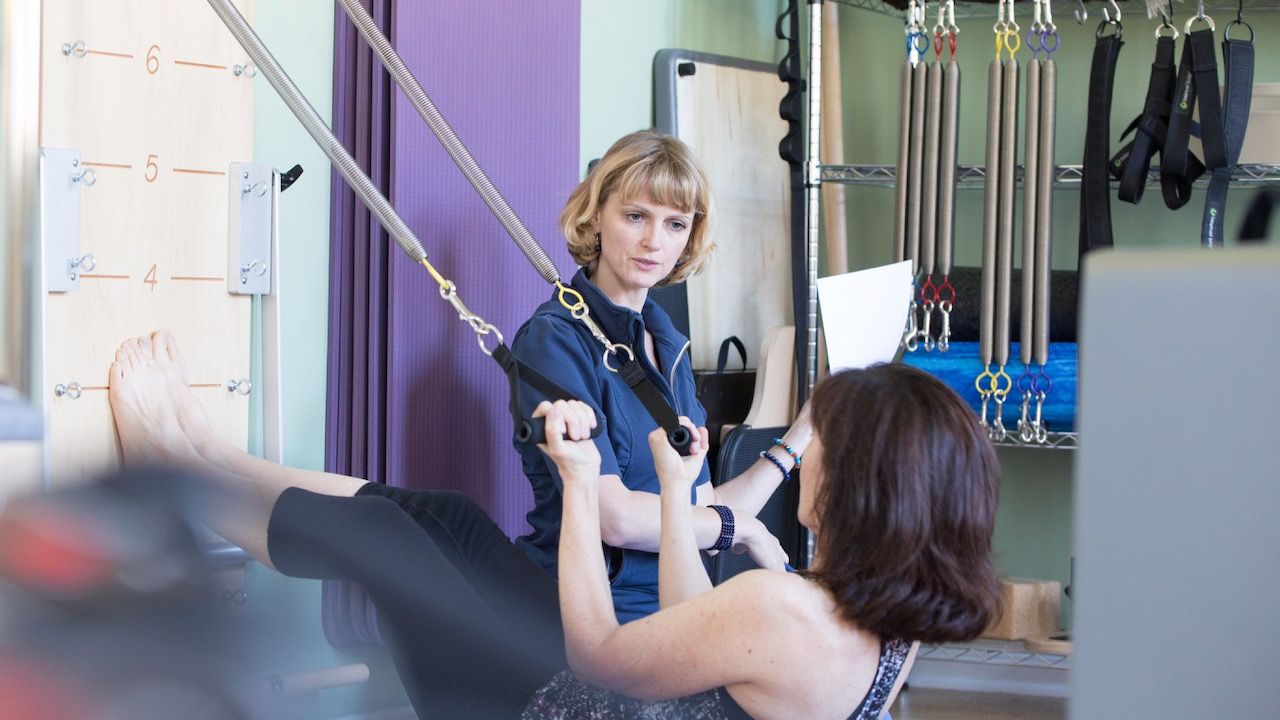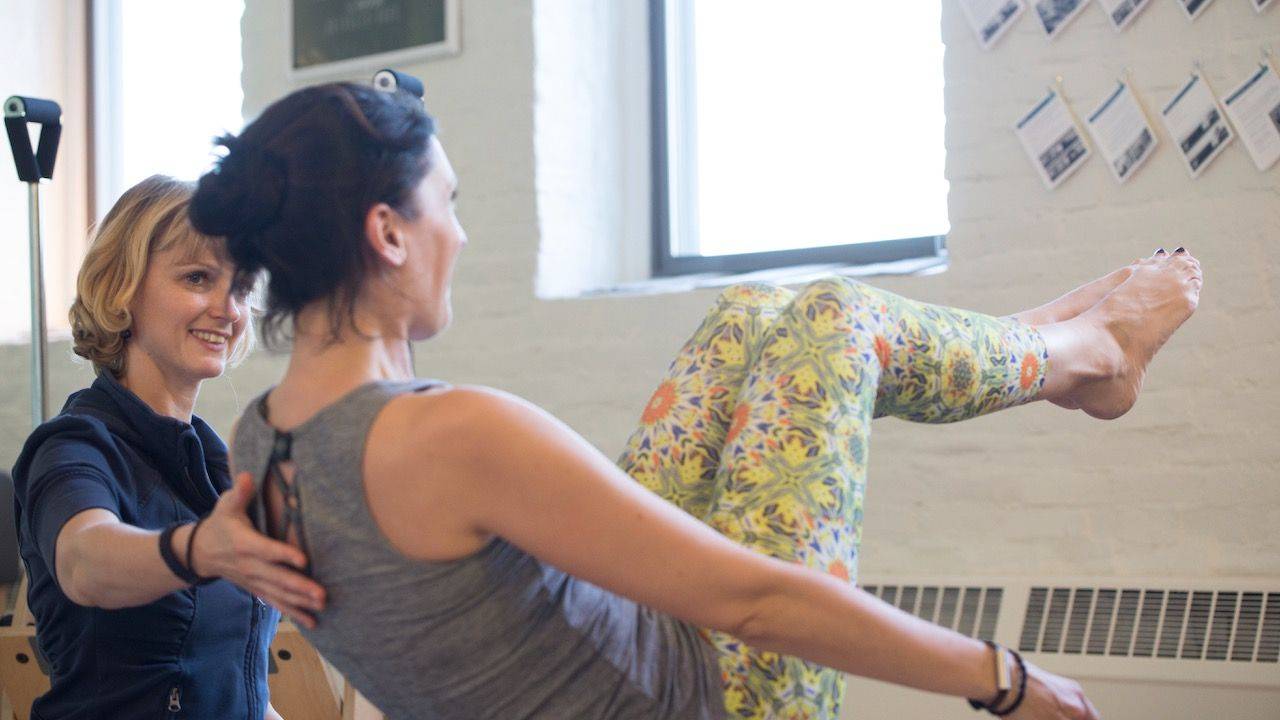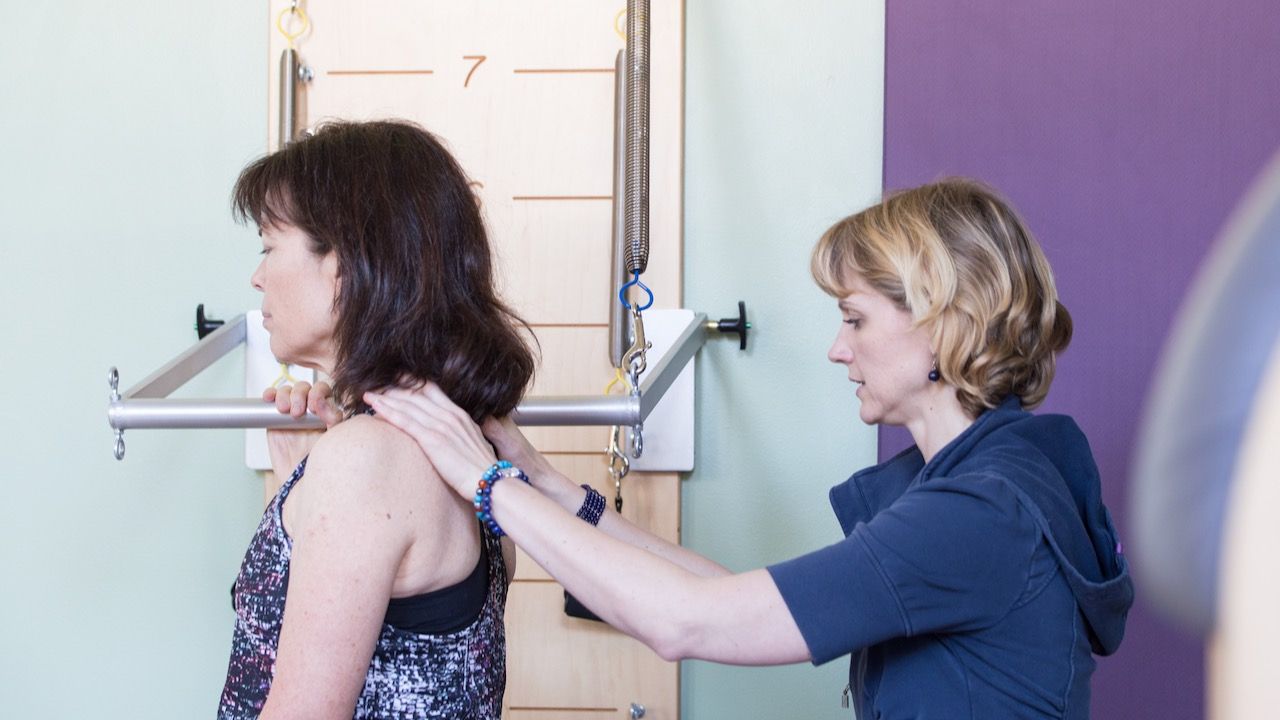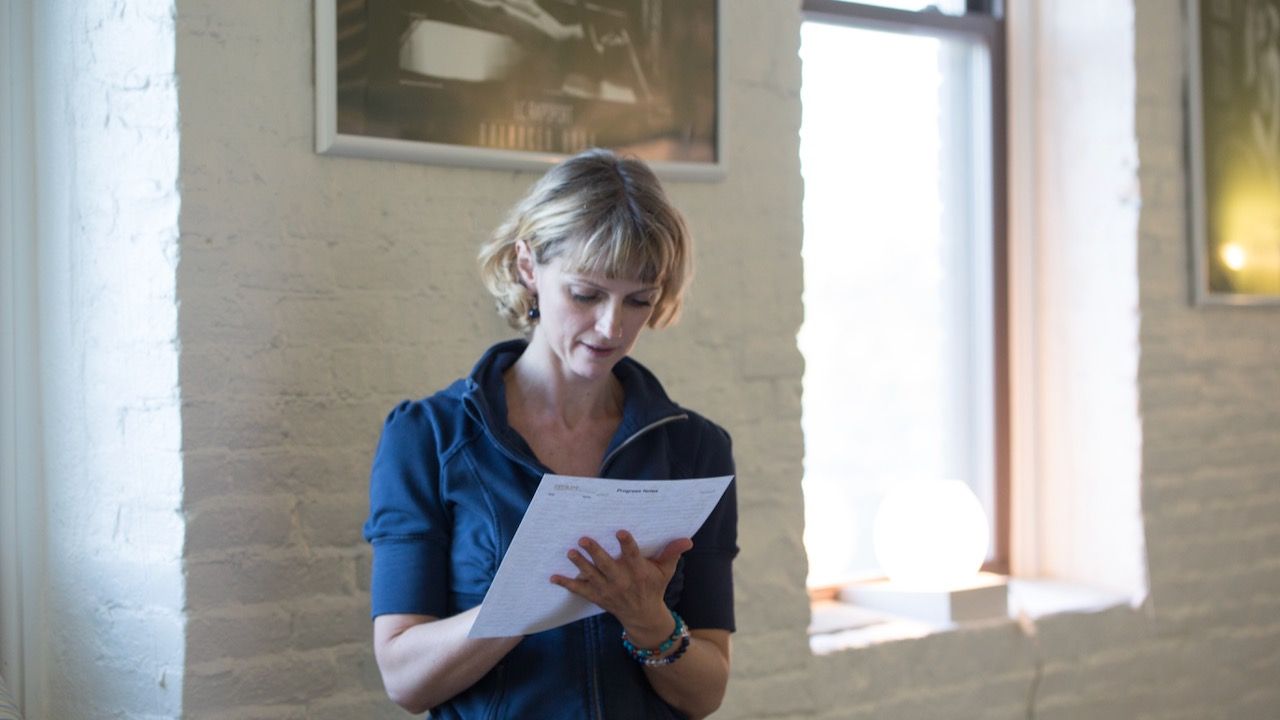
Why and How To Add a Magic Circle to Feet in Straps on the Reformer
Oct 11, 2024The magic circle is a popular prop for mat work and Reformer classes. The added resistance (and weight) of the Pilates ring can turn your flow quickly into a hard-core workout.
In this post, I’ll talk about the best ways to use a magic circle in Feet in Straps so that you use the prop safely and effectively with all your Pilates clients.
Which Ring Should I Choose?
Consider the weight of the ring itself. Pilates rings come in various sizes and tension levels. Plastic circles are lighter and usually have less resistance. Steel rings are heavier but yield less to your squeezing.
In terms of diameter, the quick answer is the smaller the person the smaller the ring.
Related: What to Look For in a Magic Circle
While you might think steel is better because it gives you the more intense workout, the added weight adds challenge to your hip flexors. This could potentially cause hip cramping and make the exercise less beneficial. Too much resistance can be a bad thing when the side effects outweigh the benefits of the added resistance.
When adding the magic circle for the first time in a group Reformer class, it’s safest to start with a light ring. Not only does this make the weight of the ring a non-issue it’s also less disruptive or potentially painful if one of your students drops the ring by accident. After a few weeks with the light ring, your students will have learned how to use the ring and can safely put it around or between their legs. At that point, you could potentially switch to a heavier ring.
In a private session, you can obviously ask your client about her experience and switch to a heavier ring more quickly, but for the sake of smart long-term programming, it’s still best to use a light one the very first time.
One way to counteract the extra weight of a steel ring is to choose heavier springs. For example, three instead of the traditional two springs. The heavier springs will help hold the weight of your client’s legs up, but it’s harder to press against the straps and it requires more control overall. So you just made the whole exercise harder. This can be okay, but only for experienced students who can gauge if they can deal with the added resistance (springs plus ring).
You can see how important it is to know ahead of time what you’ll be teaching. If you need help planning your classes, download our free class planning template here.
Prepare the ring before you lie down

Ask your students to put the ring next to their Reformer before lying down, so you don’t have to run around and hand a magic circle to each of your clients. Leaning the circle against the frame of the Reformer usually works well.
Another reason to come to your class prepared and know ahead of time that you will teach this variation.
Position 1: Between Your Legs

Putting the ring between your legs is more obvious to most people and strengthening your adductors is very beneficial for almost everyone. There just aren’t that many adductor exercises in the Pilates repertoire.
Standard rings have a 14” diameter. A smaller ring with 12” diameter, for example, might be a better fit for smaller or shorter clients.
Now that your legs are connected to each other, the two halves of your body can communicate and collaborate better, which can be great to improve asymmetries or imbalances, but it reduces the movement patterns you can do. #pilatestradeoff
It leaves you with Lower & Lift and Bend & Stretch.

Squeeze gently and consistently.
Position 2: Around Your Ankles

Placing the ring around your ankles (the bottom part of your outer shins, just above your ankles, to be exact) is a bit less obvious but no biggie at all, once you get the hang of it.
Simply slide your legs into the ring and find a comfortable spot on the outside of your lower legs (slightly above your ankles). Making sure the pads of the ring are lined up with your legs is best, but depending on the type of ring, you could turn the ring a quarter turn and press your legs against the narrow part of the ring. #itdepends
This position obviously does not allow much range of motion into hip abduction. You’re basically pressing isometrically outward, thereby activating your hip abductors.
Be aware that your TFL and gluteus medius are also hip flexors and if they are already working hard as hip flexors (holding your legs up), adding the resistance into abduction might cause them to cramp. Externally rotating your legs might help relieve this hip cramp. But if it doesn’t, I would recommend placing the ring between your legs instead. #werealldifferent
Movement patterns available: Lower & Lift and Bend & Stretch
Related: Pilates Exercises with the Magic Circle
Adding a magic circle to your Reformer classes can be a great added challenge if you do it right.
Inside the Pilates Encyclopedia membership, we go into even more depth and detail of this and other Pilates exercises. Join us.
Get support with your day-to-day teaching challenges
Ready to Teach Pilates with Clarity and Confidence?
Sign up to receive my weekly email newsletter. It's jam-packed with Pilates articles, videos, exercise tutorials and teaching tips.
Only super valuable stuff here. No spam ever. Unsubscribe any time.












